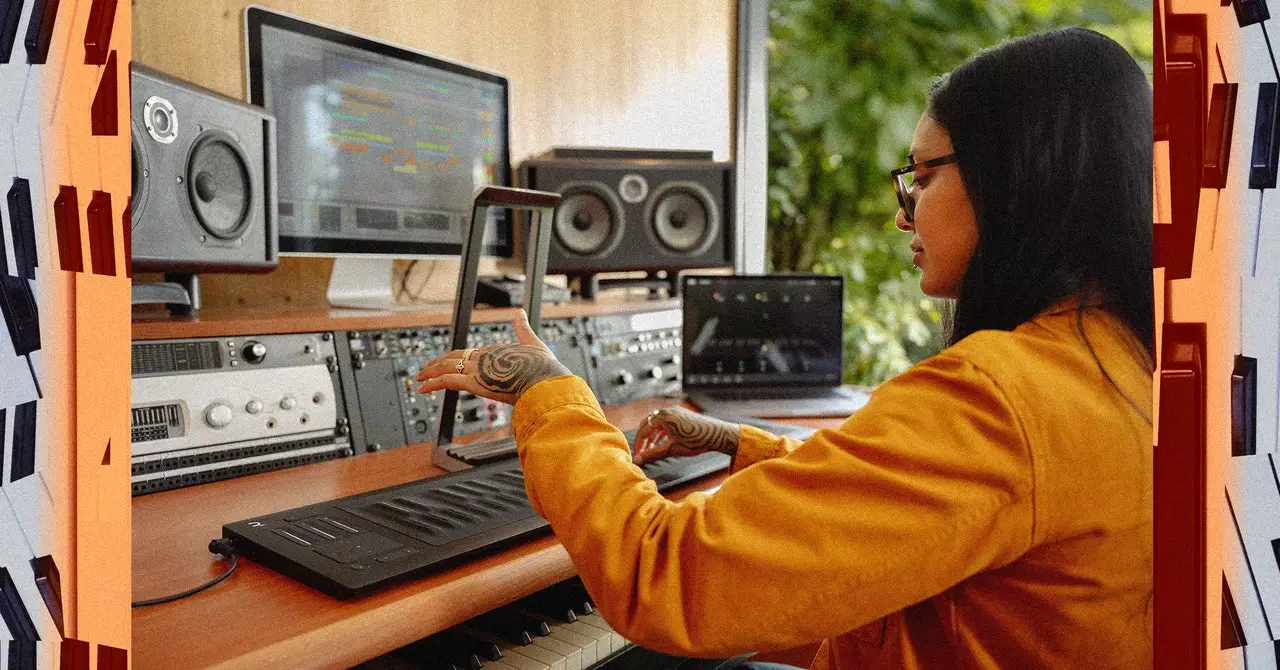In a world where technology continually transforms the way we interact with various disciplines, music education is no exception. Enter the Airwave, a groundbreaking innovation aimed at revolutionizing the piano learning experience. Developed by Roli, this instrument harnesses artificial intelligence to create an interactive environment that engages learners in a way traditional methods fail to accomplish. Co-founder Lamb expressed his frustrations with previous approaches that often left learners stalled, prompting a need for something more immediate and effective. Thus, the Airwave was born—a tool designed not just to teach, but to immerse users in their musical journey.
One of the most exciting features of the Airwave is its integration with cutting-edge AI technologies. The resourceful ChatGPT, part of OpenAI’s suite, is incorporated into Roli’s Learn platform, allowing students to speak directly to their instrument. Instead of sifting through endless online tutorials, users can simply issue voice commands to load songs or inquire about music theory terms. Queries such as the differences between scales and chords or the specifics of a C minor chord can be addressed almost instantaneously. While the chatbot’s responses might not match the nuanced guidance of a seasoned instructor, its speed and accessibility offer a crucial advantage—enabling learners to troubleshoot problems in real time and keep the momentum of their practice ongoing.
For centuries, piano education has remained largely unchanged, often seen as a long, tedious path riddled with challenges. Lamb highlights how this inefficiency affects learners by emphasizing that while dedicated practice has existed for thousands of hours across generations, there remains a fundamental gap in effective teaching methods. With the Airwave, Roli seeks to bridge this divide by providing a resource that complements traditional lessons. It acts as a supportive entity for those moments when students wish to practice independently yet require assistance—an interactive assistant that learns alongside them.
One of the most significant advantages of the Airwave is its ability to function as both a learning tool and a performance instrument for more experienced users. During a hands-on demonstration, Lamb showcased the unit’s capacity to interpret subtle hand movements much like a theremin, an electronic instrument known for its ghostly sounds. The Airwave utilizes infrared cameras to monitor hand positions and movements, unlocking a plethora of creative possibilities. Musicians can manipulate pitch, filter frequencies, or modulate sound effects simply by adjusting their hand positioning. This innovative approach not only stimulates creativity but also prompts users to develop a deeper understanding of their craft, giving them a sense of agency and active participation in their musical expression.
Another salient point is the recognition of financial constraints commonly associated with music education. Quality lessons can be prohibitively expensive, and the availability of instructors may not align with a student’s schedule. The Airwave provides a cost-effective alternative that promotes learning flexibility. By combining technology with educational frameworks, Roli is producing an instrument that caters to various socioeconomic backgrounds, making music education more accessible than before.
Looking ahead, Roli’s vision for the Airwave is ambitious. With the instrument’s ability to track intricate and nuanced movements, the company aims to roll out future updates that enhance tracking capabilities and introduce even more advanced features. As this technology evolves, so too will the possibilities it offers to musicians across the spectrum—from novices to seasoned professionals seeking to expand their creative horizons.
The Airwave represents a significant shift in music education, merging the art of music-making with the conveniences of modern technology. As Lamb and his team at Roli aim to improve the learning experience through immediate feedback, interactive voice controls, and increased accessibility, they are setting a precedent for the future of music instruction. In a time of rapid technological advancement, the Airwave is more than an instrument—it’s a catalyst for creativity and a beacon for aspiring musicians everywhere.

